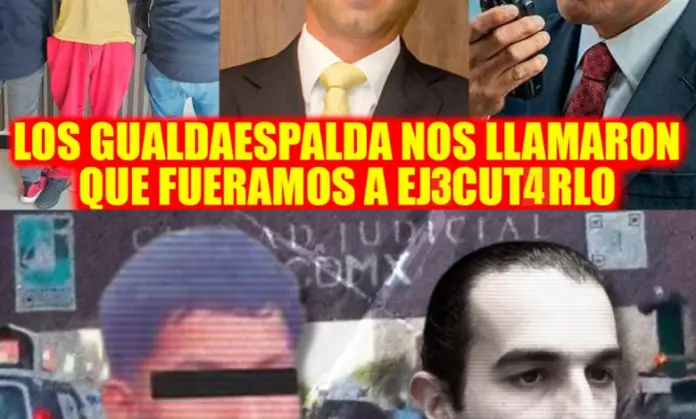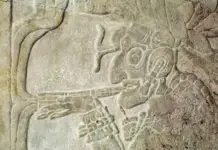The clock struck noon when the thunder of three gunshots shattered the calm of the Judicial City.
In seconds, the noise of traffic turned into screams, chaos, and silence.
David Cohen Sacal, one of the most respected and feared lawyers in the Mexican capital, fell in front of the door of the building where he had spent half his life defending impossible cases.
But what was shocking wasn’t his death.
It was what came next.
The hitmen arrested hours later confessed something that no court file was prepared to contain.
They said it wasn’t a mistake or a coincidence.
That the lawyer was handed over by his own bodyguards.
Yes, the same ones who were supposed to protect him.
The same ones who knew every step, every route, every minute of his day.
According to the leaked testimony, they sold the information, his exact location, the time he would get out of the vehicle, and the spot where he was to die.
Cohen’s murder was not improvised.
It was a timed execution, planned from the inside.
A paid betrayal.
The first images captured by security cameras show the lawyer getting out of his truck at exactly 12:05.
He walks with his briefcase in his hand, unaware that the young man crossing the street in front of him will be the one to pull the trigger.
Three shots, one fall, and a silence that still resonates.
The shooter, an 18-year-old boy wearing a cap and black sweatshirt, was arrested just four blocks away.
He was carrying a backpack with cash, clean clothes, and a non-chip cell phone.
He didn’t try to flee or resist.
He simply lowered his gaze and uttered a phrase that changed the course of the case:
“I just did what I was told.”
From that moment on, the Cohen case ceased to be just another crime and became an X-ray of power.
Because behind the young man with no criminal record, there was a network that knew too much.
The hitman’s cell phone, seized after his capture, became the key piece.
But something happened along the way: the device was turned on and tampered with before reaching the forensic lab.
Records show that during that time, several files were deleted and the names of two contacts disappeared from the history.
One of those numbers, according to an internal leak, belonged to a judicial official.
The other to a businessman linked to private security contracts.
Both, mysteriously, were left out of the final file.
Investigators also discovered that the request for additional security that Cohen had requested a week earlier was never executed.
In official records, it appears as approved, but without a delivery signature.
An administrative loophole that is now being interpreted as sabotage.
Days before the crime, Cohen had confessed to a colleague that “he was being watched.”
He received anonymous calls, encrypted messages, and veiled threats disguised as warnings.
He was compiling a dossier that, according to those close to him, linked judges, businessmen, and politicians to a corruption and money laundering network.
That dossier disappeared with him.
It was never found.
After the attack, the detained young man claimed to have received instructions from a man known as “El Goofy,” a suspected hitman recruiter in Xochimilco.
The operation to capture him was launched immediately, but was inexplicably suspended when agents had already located his address.
The official report only states: “Arrest warrant revoked by higher-level instructions.”
That phrase was the beginning of the scandal.
Who gave that order?
Why halt an operation when the suspect was within reach?
Days later, the investigation took another turn.
An agent leaked that the young hitman had been arrested minutes before the attack and released without registration.
If that’s true, the official timeline doesn’t add up.
Either there was another shooter, or the file was altered.
The cameras in the area, which initially showed the attacker’s arrival, suffered “technical failures” at the crucial moment.
When the video resurfaced, 48 seconds of the original footage were missing.
Enough time to erase any clues.
The prosecution changed its story three times in less than 24 hours.
First, they said it was a fight.
Then, a personal conflict.
And finally, a direct attack “with no apparent motive.”
But the evidence contradicts that story.
The young man knew the exact time Cohen would arrive.
He waited at the same spot where the lawyer parked his car every day.
It wasn’t a coincidence; it was privileged information.
Everything points to someone within Cohen’s security circle handing him over.
The bodyguards knew his route, his schedule, and the exact moment he would be exposed.
For money or because of orders, they turned their backs on the man they swore to protect.
Today, analysts of the case speak of a conspiracy within the judicial system.
A silent message to all those who try to expose corruption:
Whoever dares to break the pact will pay with their life.
Cohen’s family demands justice, but also fears for their safety.
“It wasn’t a robbery, it was an execution. And the person who ordered it is still there, in the halls of power,” a close relative declared, requesting anonymity.
Authorities promise to clarify the case, but the shadows continue to creep in.
Altered documents, edited videos, intimidated witnesses, and a truth that always seems to be moving one step ahead.
David Cohen’s murder wasn’t a simple settling of scores.
It was a message.
A brutal warning to anyone who tries to challenge the machinery of power.
Meanwhile, the young hitman awaits his sentencing in silence.
They say he no longer sleeps.
That he repeats a single phrase every night, the same one he said upon his arrest:
“I only did what I was told.”
And in those words, perhaps, lies the whole truth.

Source: special24h




